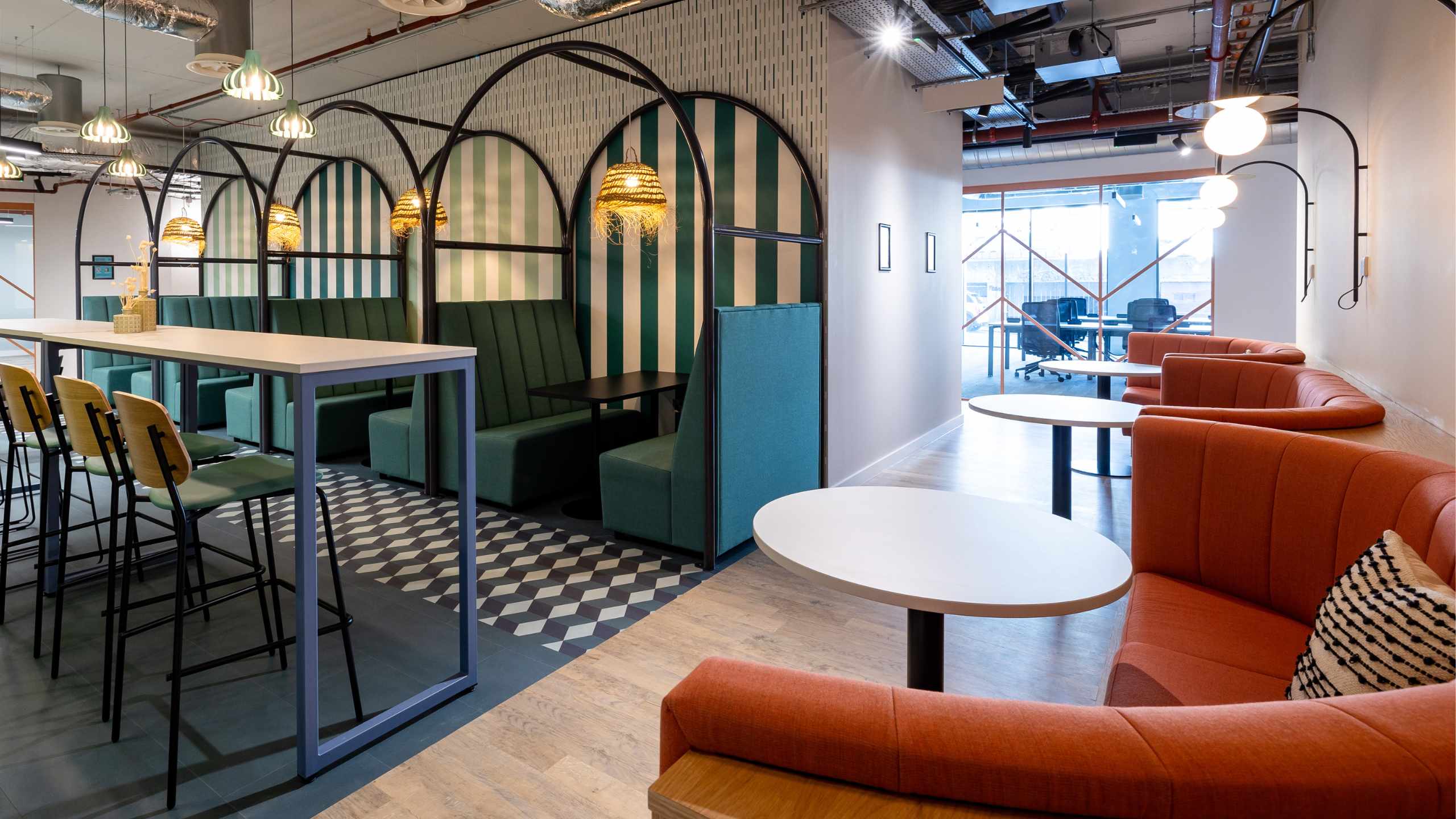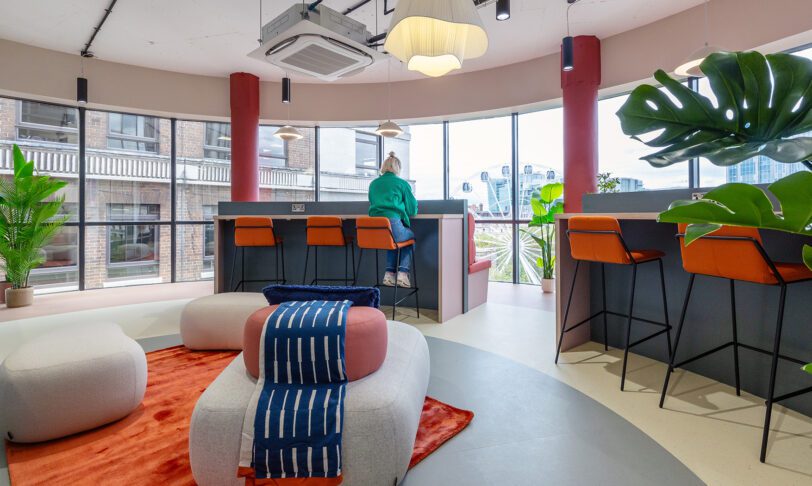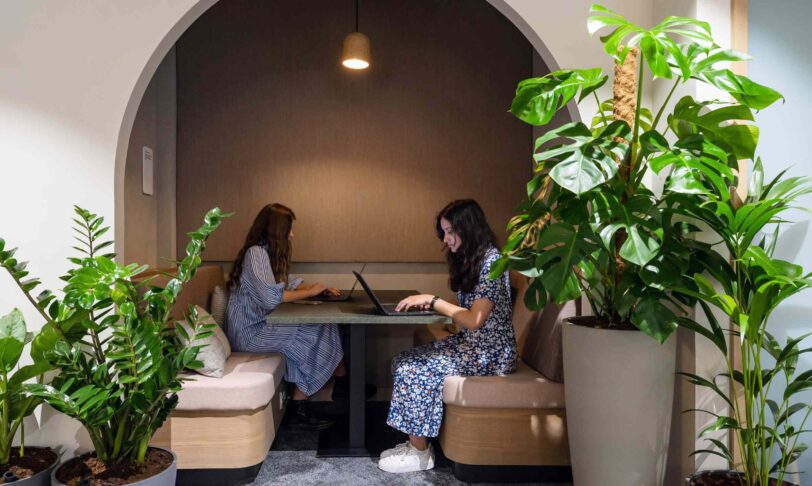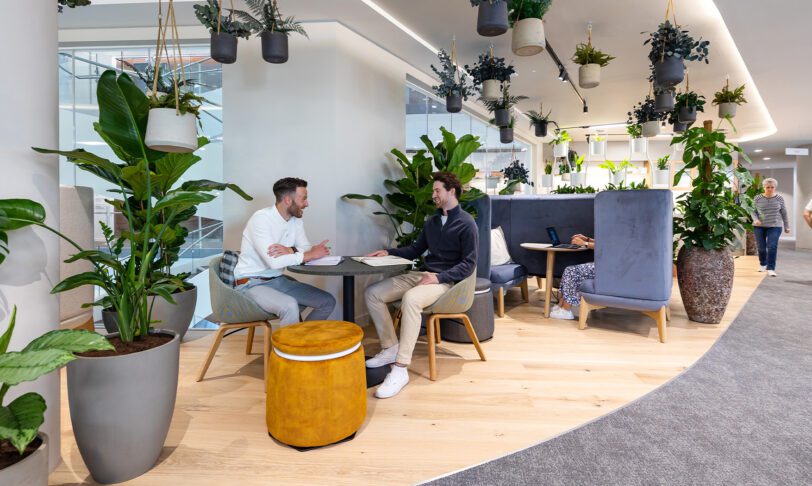What are the benefits of hot desking?
The days of assigned seating in offices are long gone – after all, the workplace isn’t a classroom! Instead, hot desking has surged in popularity in recent years. It’s essentially a more flexible approach to seating, so people are free to change desks based on availability, personal preference and whatever tasks are in store for them that day.
One of the biggest catalysts for hot desking has been the switch to hybrid work models. Since employees are regularly splitting their time between home and the office, assigned seating just doesn’t make as much sense anymore. That’s not to say, however, that hot desking cannot be beneficial for office-only employees. In this article, we’ll be examining how the various benefits of hot desking can be fully realised in the workplace.
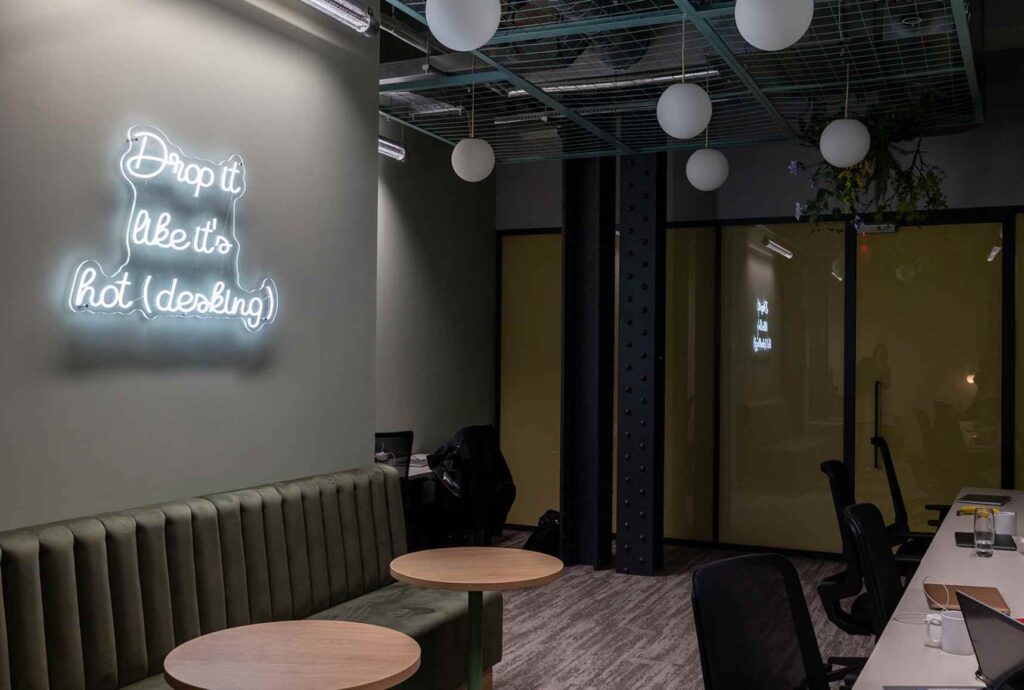
Does hot desking improve collaboration?
Hot desking can definitely foster collaboration among employees. By moving between desks, people from different teams can work together and share new ideas. Therefore, hot desking can be used to boost innovation and effective problem-solving within a supportive workplace culture. Ultimately, a more flexible approach to seating breaks down barriers between employees, allowing new and enriching working relationships to flourish.
Can hot desking increase productivity?
It makes perfect sense that people feel more empowered to do their best when they have more control over their work environment. Hot desking allows people to choose where they work, not just based on the task at hand but also their mood. People may want to feel immersed in the hubbub of a bustling office one day, but the next day want to take themselves to a quiet space to focus. This ability to move between different workspaces can do wonders for productivity – in fact, a 2018 study published in Verdict found that 46% of surveyed employees felt more productive in a hot desking environment compared to a traditional set-up.
Does hot desking increase employee engagement?
Many organisations cite flexibility as one of their main values, and hot desking allows them to put their money where their mouth is. People are far less likely to feel engaged if there are arbitrary limits on where they can work. By comparison, hot desking can enhance employee engagement by creating an environment that is not only flexible and collaborative but also inclusive. This is because every team member has an equal opportunity to interact and collaborate, fortifying a sense of belonging.
Can businesses cut costs with hot desking?
As you’re reading this article, swathes of office space are sitting unused. This is no more apparent than in London, where Finance News reports that the current amount of vacant office space is equivalent to 60 Gherkin skyscrapers. Rather than allowing their offices to keep gathering dust, more and more businesses are taking the opportunity to downsize and turning to hot desking as a way to economise. By maximising the use of available space, companies can save money on rent, furniture and energy usage. It’s been estimated that hot desking can reduce spending by up to 30% – which is certainly something to take note of.
How to implement hot desking in your office
Hot desking isn’t a case of simply chucking out the assigned desks – it needs to be woven into your workplace strategy with thoughtful consideration. Here are a few tips for making the transition to hot desking as seamless and productive as possible.
Ensure an equitable set-up
Hot desking is a pretty redundant exercise if one area of your office is objectively better than the other. People must be able to access a productive and comfortable workspace, regardless of where they’re sitting. This means office supplies, power outlets and ergonomic workstations need to be spread out evenly. Employee input is vital when navigating a move to hot desking, as it allows you to tailor this new flexible work environment to individual needs and preferences.
Consider ‘zoning’ by team or task
To help people move between different environments with ease, think about how you can delineate space without relying on physical barriers. For instance, you may want to mark out spaces for group work, meetings or ‘deep focus’ using different colours, textures or varying floor and ceiling heights. Not only can this create spaces that are conducive for hot desking, but it can also make your office more unique and visually appealing.
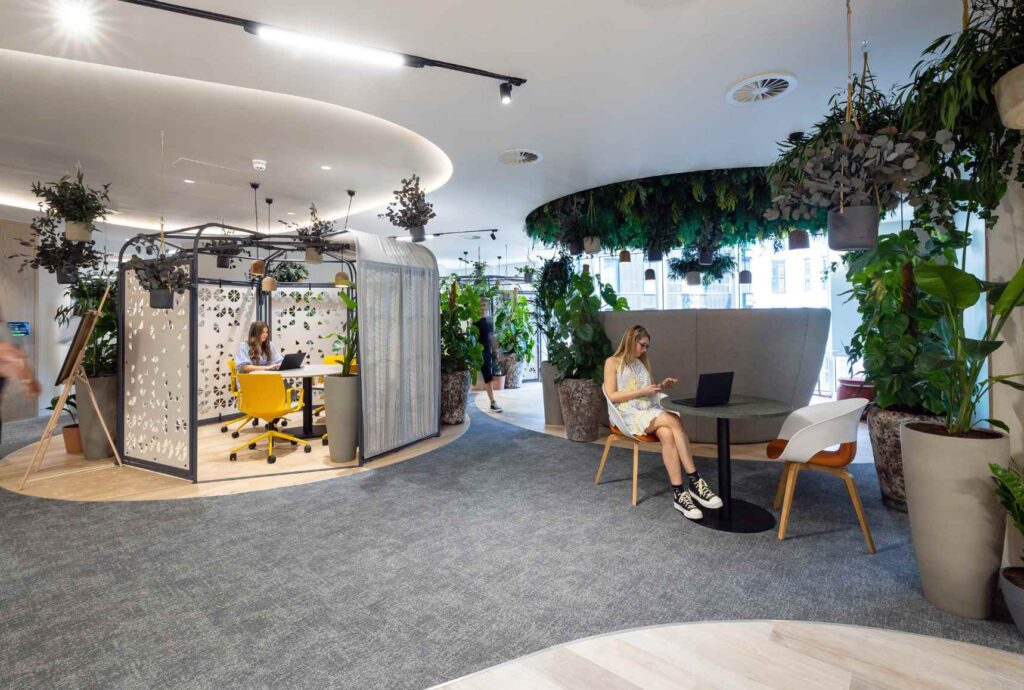
Adapting your policies to make it work
Incorporating hot desking into your workplace policy will smoothen the transition and keep everyone is on the same page with what’s expected. A “clear desk policy”, for instance, will keep work areas ready for anyone to plug in and get started with minimal fuss. For this to work, your office should have ample storage space to reduce the likelihood of desks being cluttered. Other offices also keep desks hot by encouraging rotation, specifying that people can’t sit at the same desks for a set number of days in a row.
Combine hot desking with private and collaborative spaces
Hot desking can provide flexibility and promote collaboration, but people must also have access to private workspaces when they need to focus on individual tasks. For instance, you could combine hot desking with booths that have a more rigid set-up for solo work, as well as dedicated breakout rooms and meeting areas. This means you can realise the benefits of hot desking while also appealing to those who prefer a more structured work environment.
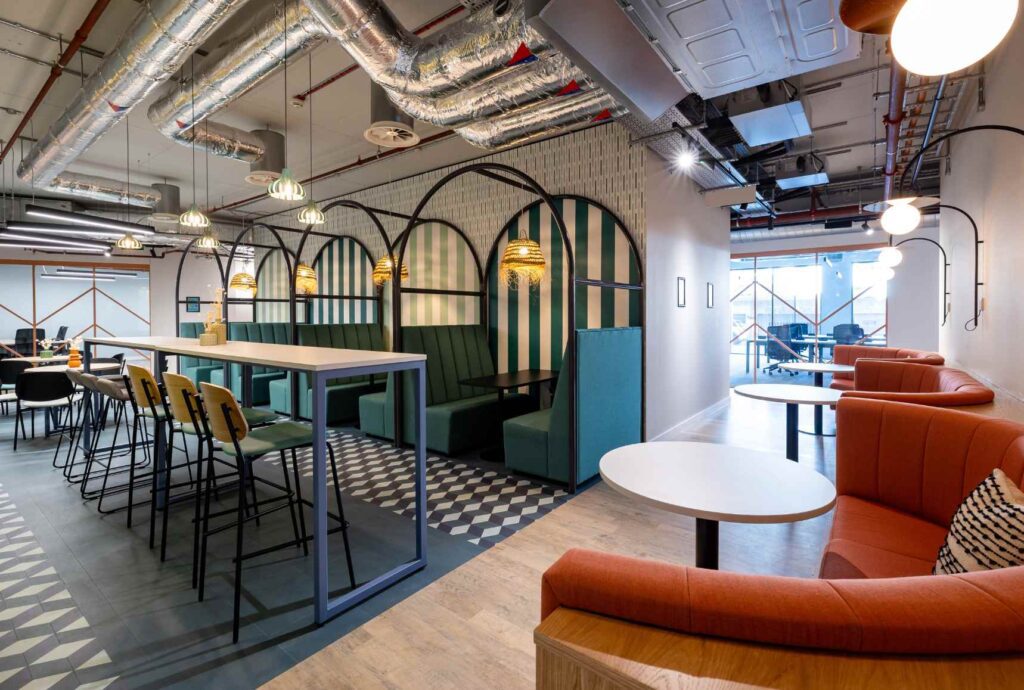
Give people ownership of shared spaces
Having ownership of a shared space seems contradictory, but it essentially means people can personalise their surroundings, regardless of where they are in the office. For example, adaptable office furniture and ergonomic workstations allow employees to adjust their space for maximum comfort while hot desking. If you’re designing new spaces, you should involve employees from the outset so that communal environments meet everyone’s unique needs.
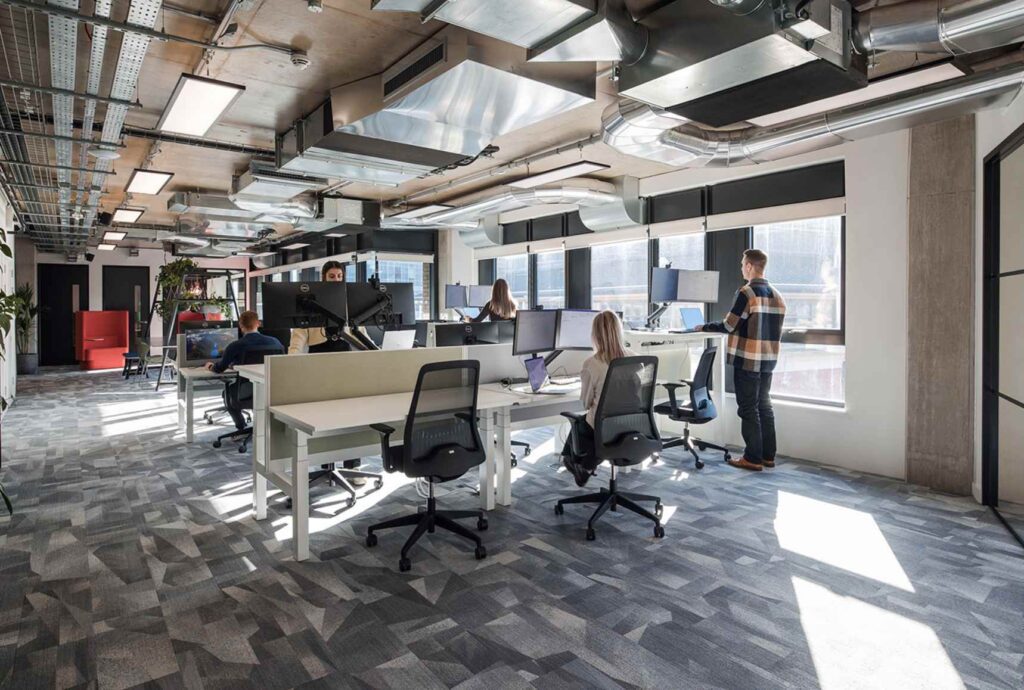
Make the most of hot desking technology
Leveraging technology can help to ease the transition to hot desking and improve the overall efficiency of the workplace. Desk booking apps are essential for avoiding any awkward conflicts over who sits where, as are occupancy sensors that detect which desks are vacant. These sensors will often beam this information to a screen either in the office or at reception. For more of a deep dive, consider workplace utilisation analytics for insights into how people are using office space. This will allow you to pinpoint if there are any spaces where employees feel less comfortable or productive.
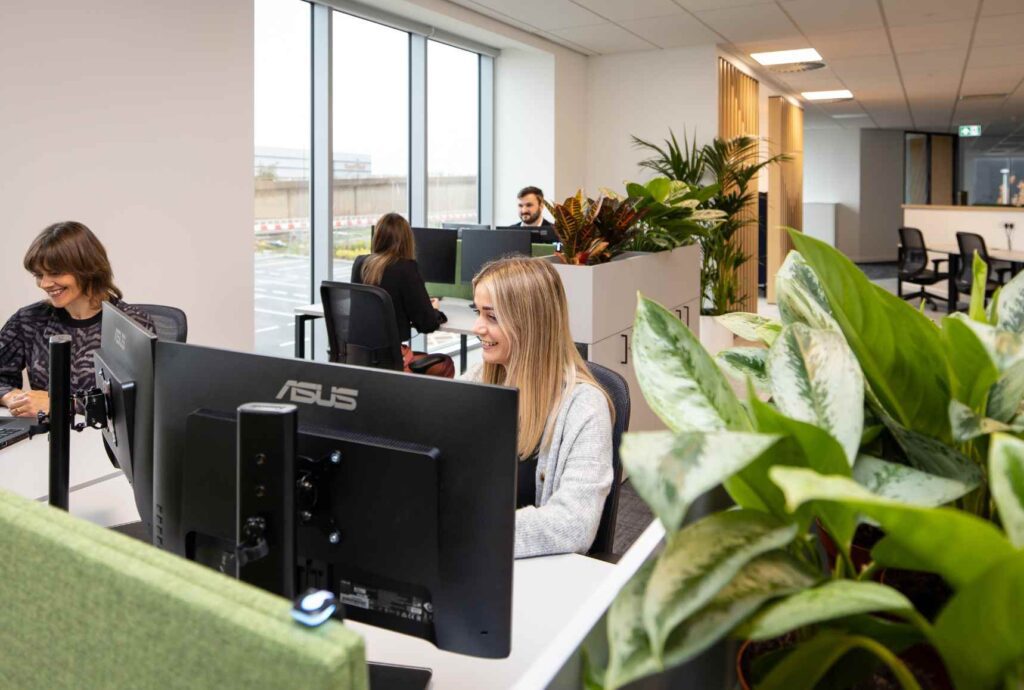
Potential disadvantages of hot desking
While there are proven benefits to hot desking, there are also potential drawbacks that must be considered. Fortunately, these issues are surmountable as long as you regularly elicit feedback from employees and make practical choices for office layout and design.
Is hot desking difficult for people who need custom workstations?
If not done properly, hot desking can be challenging for individuals who require custom workstations or prefer a certain setup. However, these concerns can be addressed effectively. Companies must provide adjustable furniture and the necessary equipment to cater to individual preferences and needs. Additionally, employees should be encouraged to bring personal items to make the space feel more comfortable and personalised.
Can hot desking ever hinder communication?
While hot desking is intended to foster collaboration and communication, some people may struggle to create ad-hoc teams or have spontaneous discussions. However, these obstacles can be overcome with a well-designed office layout with zones for specific teams, as well as collaboration tools that facilitate communication regardless of where people are located.
Do some people prefer traditional desk set-ups?
Lastly, the transition to hot desking may not be welcomed by everyone. Some employees might prefer the security and familiarity of a traditional desk setup. This hurdle can be overcome by creating a genuinely flexible environment that allows for both private and shared workspaces. By providing a range of workspace options and ensuring that employees have the freedom to choose according to their preferences, companies can create a comfortable and productive environment for everyone.
Office fit-outs for better hot desking
Interaction is adept at creating environments for hot desking. We can offer CAT B office fit-outs that are purposefully designed for optimal hot desking, with plenty of desks with good plug access and lighting as well as separate rooms for meetings and solo work if needed.
For instance, we worked with Amdaris to create a fully-agile office space that combined the benefits of hot-desking with dedicated ‘client zones’ and spaces for private meetings.
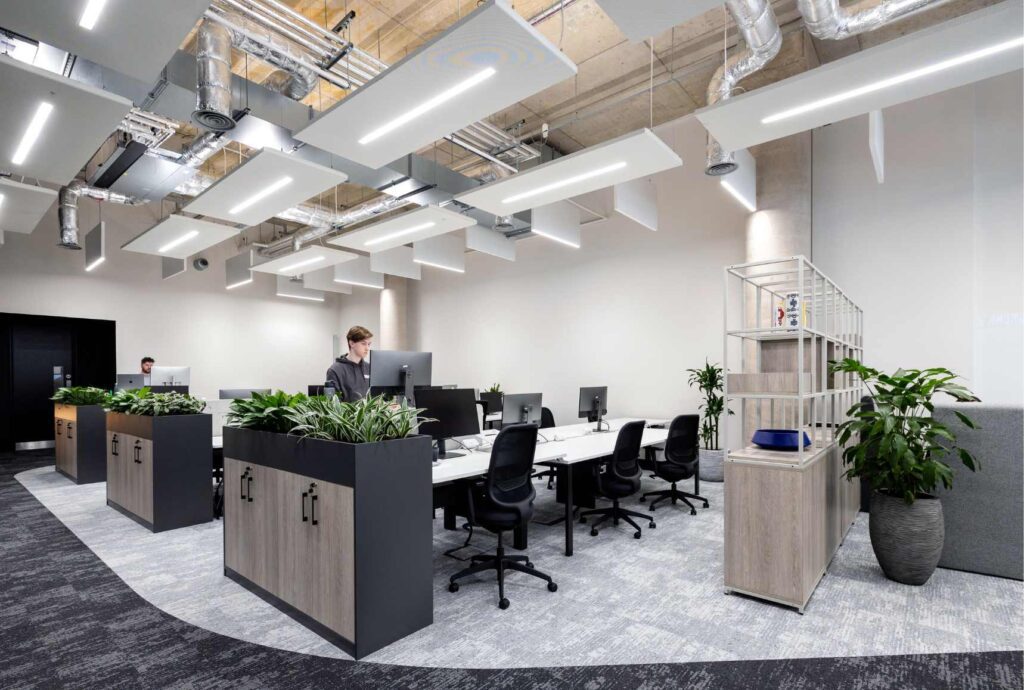
We also incorporated hot desking into the design for Granger Reis. The space includes semi-private booths, informal touch-points and ergonomic seating to allow the employees to choose a seat based on their needs.
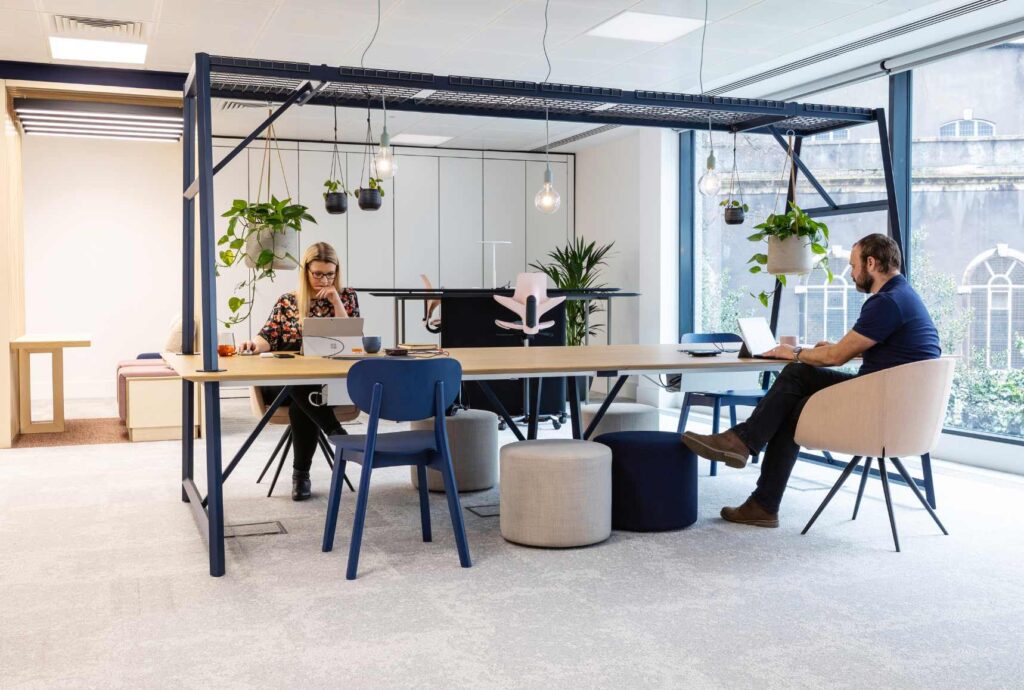
We’ve been creating some of the UK’s best workspaces for over thirty years, so we’re happy to help with all your office fit-out needs. To find out more, get in touch at 01225 485 600 or why not schedule a chat with Charlie today?
